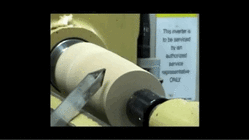I know I have been asking some pretty basic questions. Thanks for your indulgence and thoughtful answers.
I am much more familiar with sharpening plane blades and woodworking chisels than lathe chisels. When sharpening these tools you sharpen until a wire burr is raised and then remove the burr. The only time a burr comes into play is with a card scrapper.
After reading a lot of sharpening posts I have a question about burrs and my understanding of them when it comes to lathe chisels. This is what I've picked up about burrs:
-
I am much more familiar with sharpening plane blades and woodworking chisels than lathe chisels. When sharpening these tools you sharpen until a wire burr is raised and then remove the burr. The only time a burr comes into play is with a card scrapper.
After reading a lot of sharpening posts I have a question about burrs and my understanding of them when it comes to lathe chisels. This is what I've picked up about burrs:
- scrapper chisels are treated like card scrappers, raise a burr and then leave it, it shouldn't be honed off.
- when a scrapper gets dull, rather than grind it, use a burnisher to raise another burr. Grind only when you can't burnish a burr.
- after grinding a skew, hone off any burr
-

